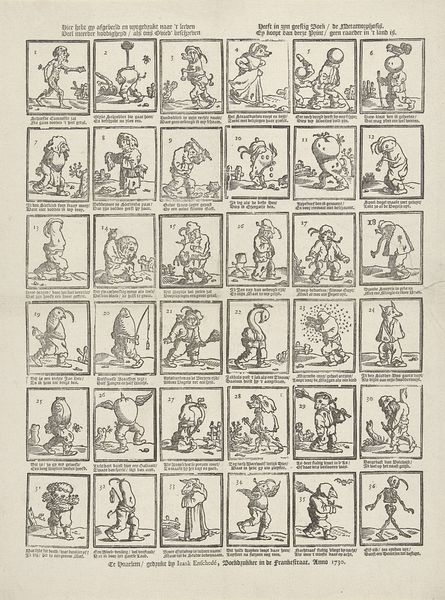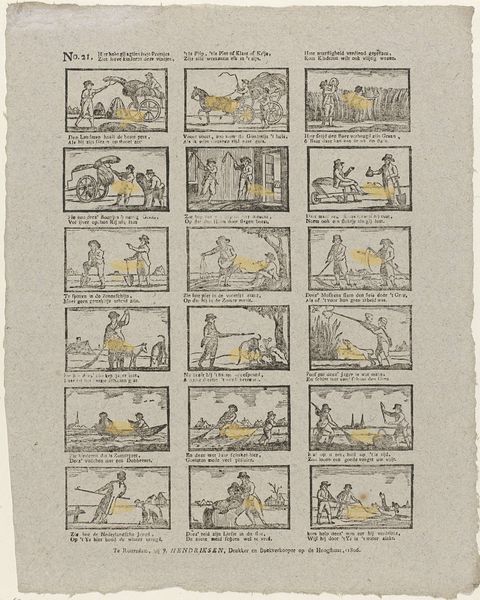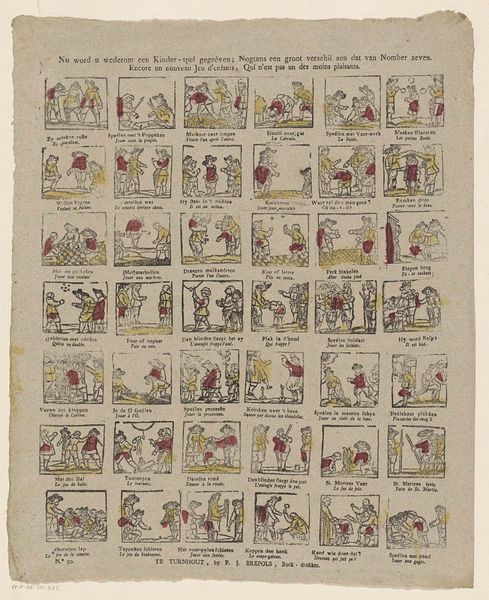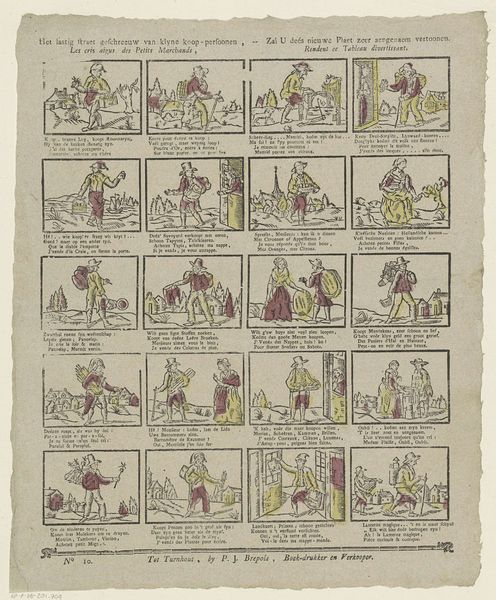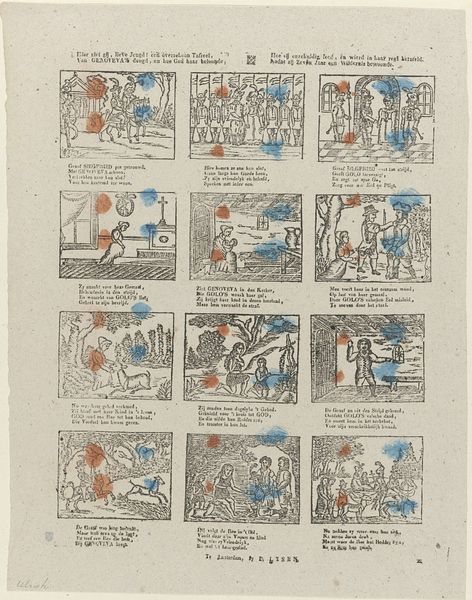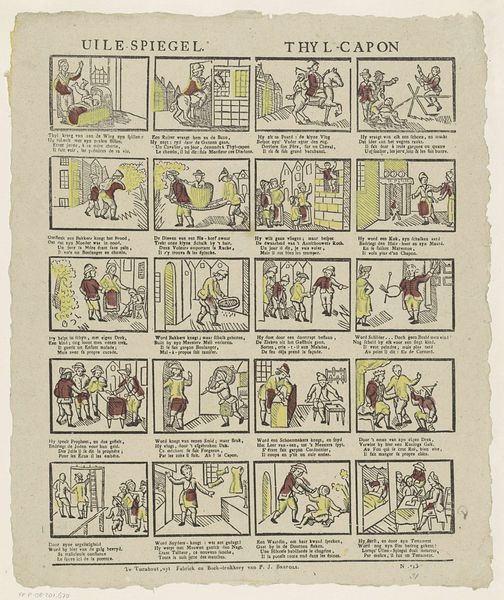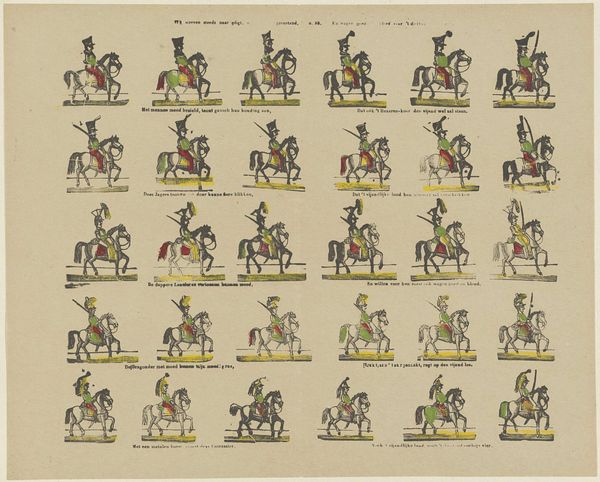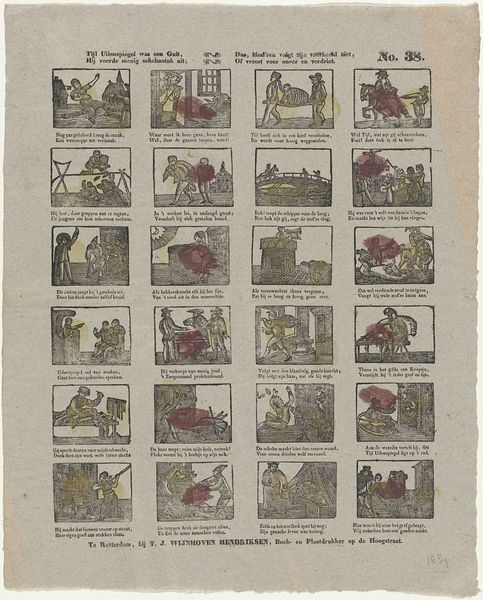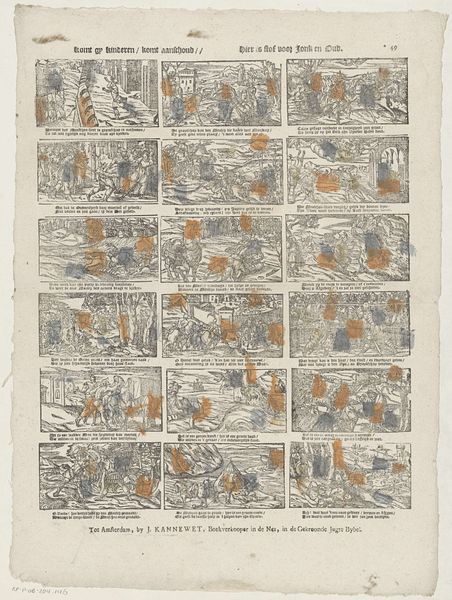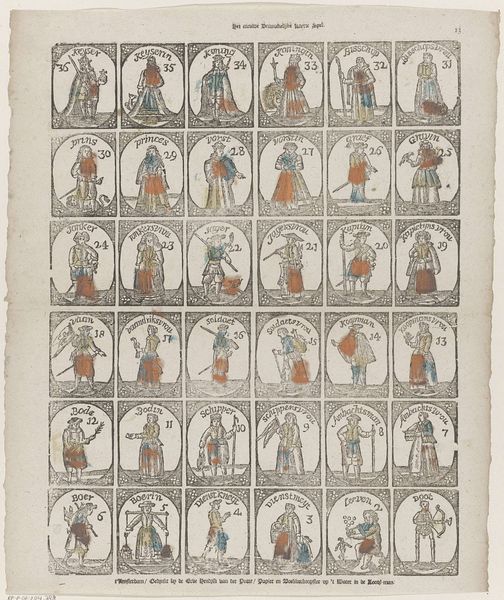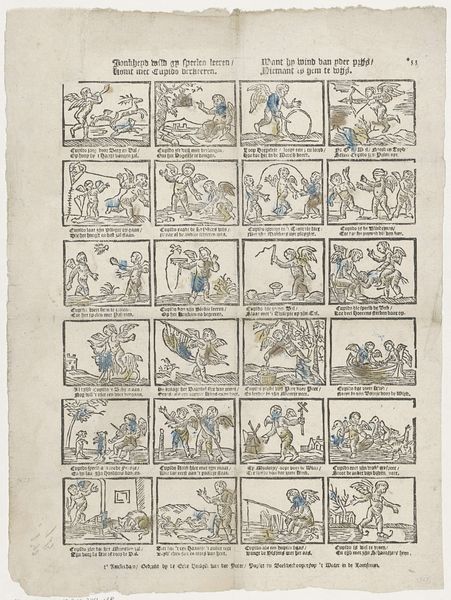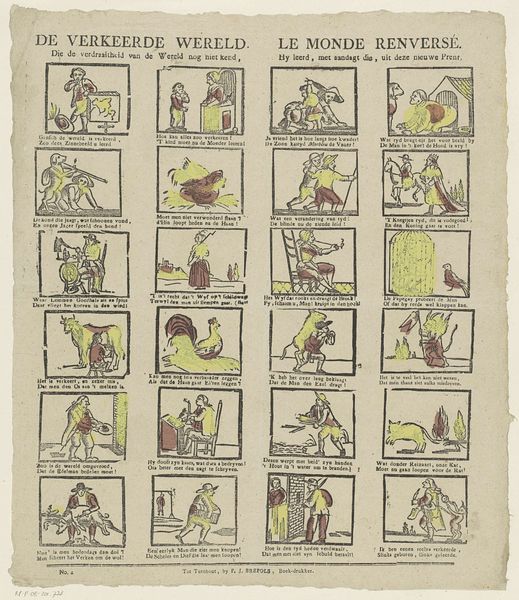
drawing, print, etching, engraving
#
drawing
#
narrative-art
# print
#
etching
#
caricature
#
romanticism
#
genre-painting
#
history-painting
#
engraving
Dimensions: height 394 mm, width 320 mm
Copyright: Rijks Museum: Open Domain
Editor: This is "Marche de la Cavalerie / Togt der Ruitery" by J. Proost, created sometime between 1800 and 1833. It's a print combining etching and engraving, depicting a sequence of horsemen. I'm struck by its almost comic-strip style, presenting what seems like a military exercise in simple frames. What can you tell me about how this piece reflects the times? Curator: That "comic strip" format is interesting, isn't it? Let’s think about the audience for prints like this in the early 19th century. Broadsides like these were often sold cheaply to a growing literate public. Consider how military imagery, especially after the Napoleonic wars, was consumed. Does this strike you as celebratory or something else? Editor: I initially thought celebratory, but now that you mention it, there’s a somewhat… ironic feel? The poses are almost absurd, and the cheap production value contrasts with the supposed grandeur of the cavalry. Curator: Exactly! It touches upon the rise of national identity but also hints at a more critical perspective. The title is in both French and Dutch which raises questions about its intended audience and the cultural landscape of the Netherlands at that time. Were these soldiers symbols of national pride, figures of fun, or perhaps both? Editor: That’s a great point about the dual languages and intended audience. I hadn't considered that it could be read as social commentary as much as straightforward representation. Curator: Think about the role of printmakers like Proost in shaping public perception. By examining their distribution networks and the themes they chose to depict, we understand more about the complex relationship between art, politics, and everyday life. So what's your view on this artwork? Is it a patriotic depiction of national force, or a commentary on society and militarism? Editor: I now see it's more ambiguous and complex, and definitely a reflection of evolving public sentiment and national identity in a turbulent period. Curator: Indeed, seeing it that way unlocks richer layers of meaning!
Comments
No comments
Be the first to comment and join the conversation on the ultimate creative platform.
